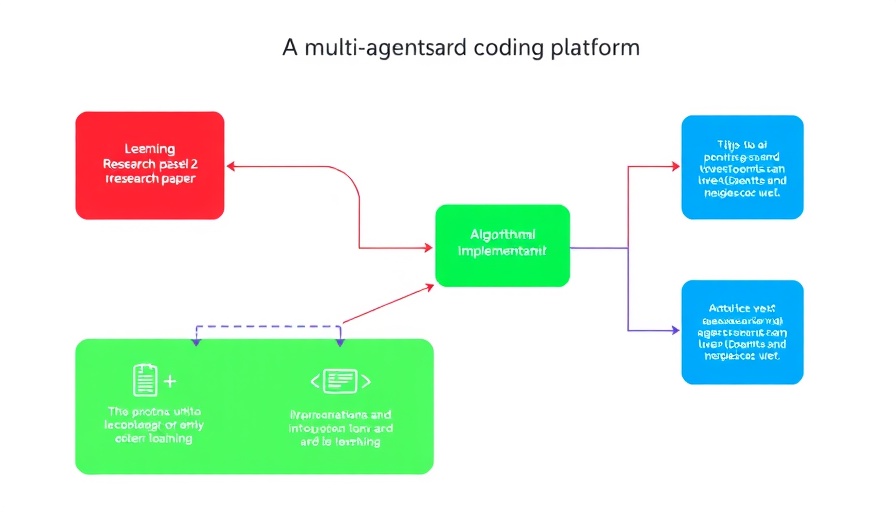
Unveiling DeepCode: A Revolutionary Open Agentic Coding Platform
In the rapidly changing landscape of technology, a novel solution has emerged that promises to bridge the gap between complex academic research and practical software applications: DeepCode. Developed by researchers from the University of Hong Kong, this open-source AI-driven platform is designed to transform research papers and technical documents into ready-to-use, production-grade code.
What Sets DeepCode Apart?
DeepCode stands out in the AI coding landscape with its unique "Open Agentic Coding" framework. This innovative approach utilizes a network of specialized agents working in harmony to streamline the software development process. Unlike traditional coding methods that often involve painstakingly converting academic theories into code manually, DeepCode automates this transfer via sophisticated tools.
The Key Features of DeepCode
DeepCode is loaded with features that significantly enhance productivity for small and medium-sized businesses:
- Paper2Code: This feature enables users to convert intricate research algorithms and concepts from academic papers directly into functional code, saving countless hours.
- Text2Web: By transforming simple text into engaging, fully functional web interfaces, it accelerates the front-end prototyping process, making website development more accessible and efficient.
- Text2Backend: This tool streamlines server-side development by converting text requirements into robust backend code.
- Quality Assurance Automation: With automatic static analysis, unit testing generation, and documentation synthesis, this feature validates code thoroughly, ensuring reliability.
Understanding the Multi-Agent Architecture
Central to DeepCode's operations is its multi-agent architecture. Each agent specializes in a distinct area of the coding process:
- Central Orchestrating Agent: This component leads the task execution and decision-making process.
- Intent Understanding Agent: It interprets user requirements—whether clear or ambiguous—and transforms them into structured plans for coding.
- Document Parsing Agent: This agent analyzes technical documents to extract vital algorithms and implementation specifics.
- Code Planning & Reference Mining Agents: These agents optimize architecture design by analyzing existing technology stacks and searching for reusable code components.
- Code Generation Agent: This component synthesizes the outputs from other agents into full-stack deployments.
Why Small and Medium Businesses Should Care
For small and medium-sized enterprises (SMEs) that may lack extensive technical resources, DeepCode offers a pathway to leverage cutting-edge technology without needing a large development team. By automating the coding process, SMEs can reduce costs and shorten project timelines, enabling them to respond more agilely to market demands.
Future Predictions: The Impact of DeepCode
The implications of DeepCode's adoption are profound. As more businesses embrace this tool, we can expect a significant acceleration in the development of innovative applications and products. This shift not only positions SMEs to compete more robustly against larger firms but also fosters a new wave of digital transformation across various sectors.
Common Misconceptions About AI in Coding
Despite the promise of platforms like DeepCode, some common misconceptions persist around AI technologies. Many small business owners may fear that such automated solutions lack creativity or may lead to coding errors. However, with rigorous quality assurance processes entrenched within DeepCode’s framework, these concerns are mitigated.
Take Action: Embrace AI-Fueled Development
As DeepCode continues to evolve, small and medium-sized businesses have an opportunity to harness its potential for enhancing productivity and innovation. Embracing such technologies positions businesses for a prosperous future in an increasingly competitive digital landscape. Consider exploring how integrating DeepCode can transform your development processes and enhance your operational capabilities.
Now is the time for SMEs to embrace AI-driven tools like DeepCode to stay ahead in the technological race. Leverage these innovative solutions to foster growth and streamline your operations, ensuring your business is well-equipped for the future.
 Add Row
Add Row  Add
Add 



Write A Comment